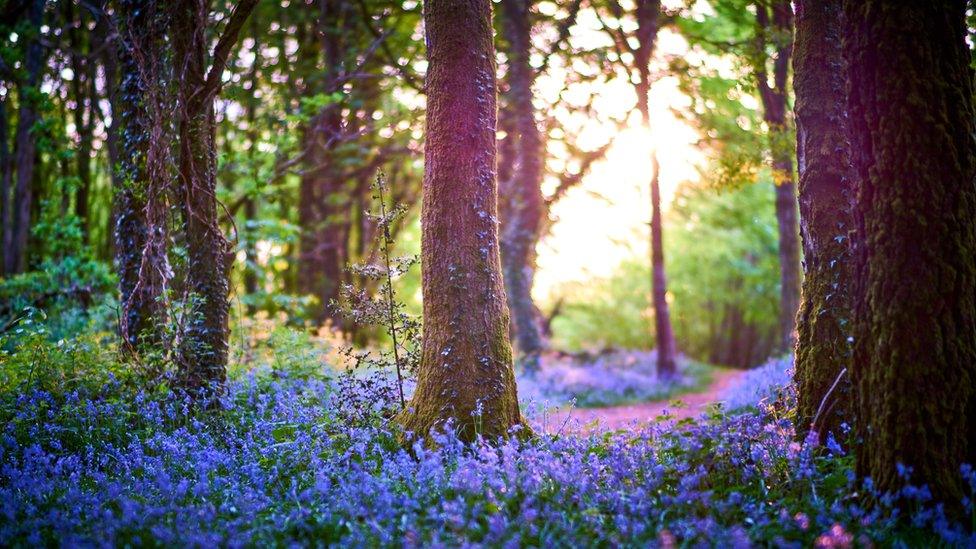How to save native woodlands from invasive shrubs - one tree at a time
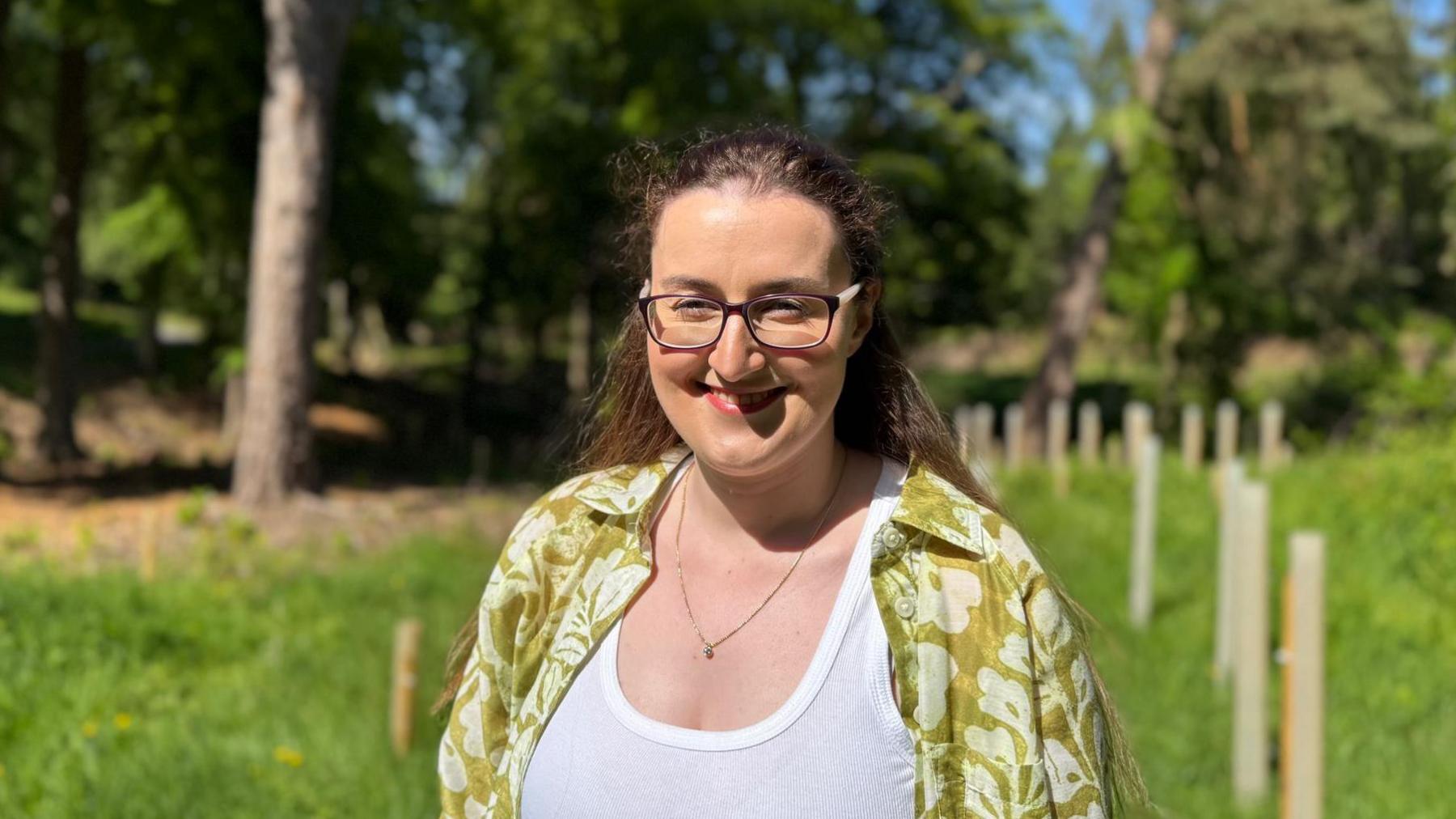
Niamh Carmichael, a species surveillance officer, said it could be 120 years before new trees mature and the ecosystem rebalances at one of Northern Ireland's only native woodlands
- Published
When it comes to protecting the future of one of Northern Ireland's only native woodlands, a surprising amount of demolition work has to happen before you can really see the wood for the trees.
That's why a huge project - that could span decades into the future - has been digging, scything and excavating to keep invasive alien species at bay along a crucial woodland corridor stretching from Belfast to Bangor.
National Museums NI and the Woodland Trust have teamed up to remove 1,200 tonnes - the equivalent of 700 cars - of aggressive invasive species like rhododendron and cherry laurel, a thick shrub with poisonous cyanide-laced leaves, from a site near the Ulster Folk Museum and the Ulster Transport Museum.
Thousands of native trees are now being planted to replace them.
It's part of an effort to preserve one of the few areas of native woodland in Northern Ireland.
As the least wooded corner of Europe, Northern Ireland has only about 8% forest cover, compared to the 40% European average., external
And less than 0.5% of Northern Ireland's forest cover is made up of native woodland, which is why the aim of this project is to plant more than 2,500 native trees at the site.
What's the threat to Northern Ireland's woodland?
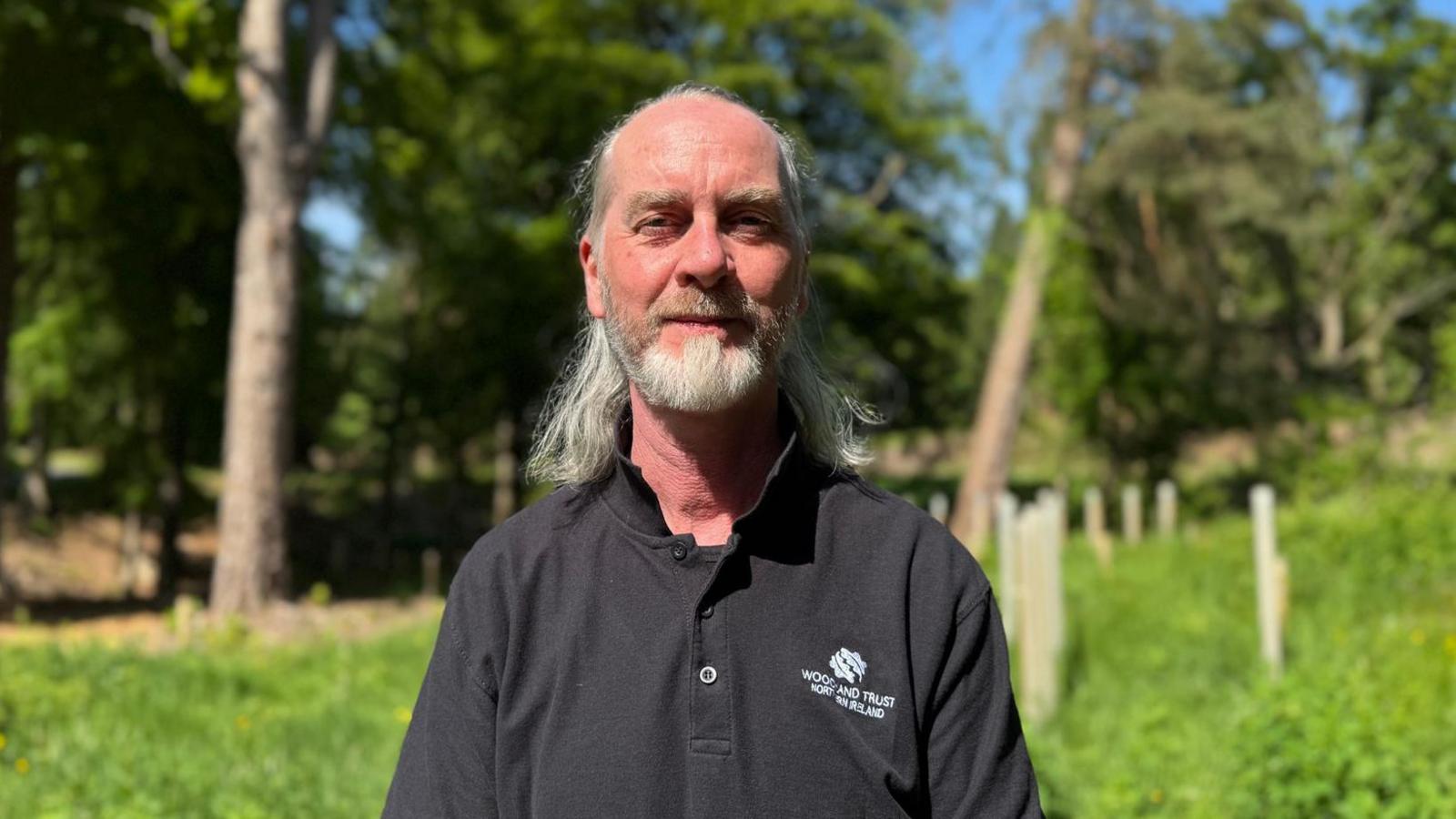
Jerry Hawe said Northern Ireland's depleted woodlands face a range of challenges, including from invasive exotic species
Jerry Hawe, from the Woodland Trust, told BBC News NI that "so much of our semi-natural woodland is vastly depleted".
"It's less than half a percent of our land area and, unfortunately, the remaining woodlands face a whole range of challenges.
"Probably first among these would be the challenge from invasive exotic species."
Over the last few decades, the woodland at the folk museum has suffered a "heavy infestation" of cherry laurel and rhododendron - both "very aggressive" invasive species.
The scale of the infestation means native species aren't able to naturally regenerate, meaning the future of the forest is "by no means secure".
"In order for these woodlands to support the full range of associated species, flora and fauna, then the more native we can make them, the better."
The Woodland Trust will provide advice to National Museums NI on how to manage and maintain the woodland as it matures to ensure natives such as hazel, birch and oak are prioritised.
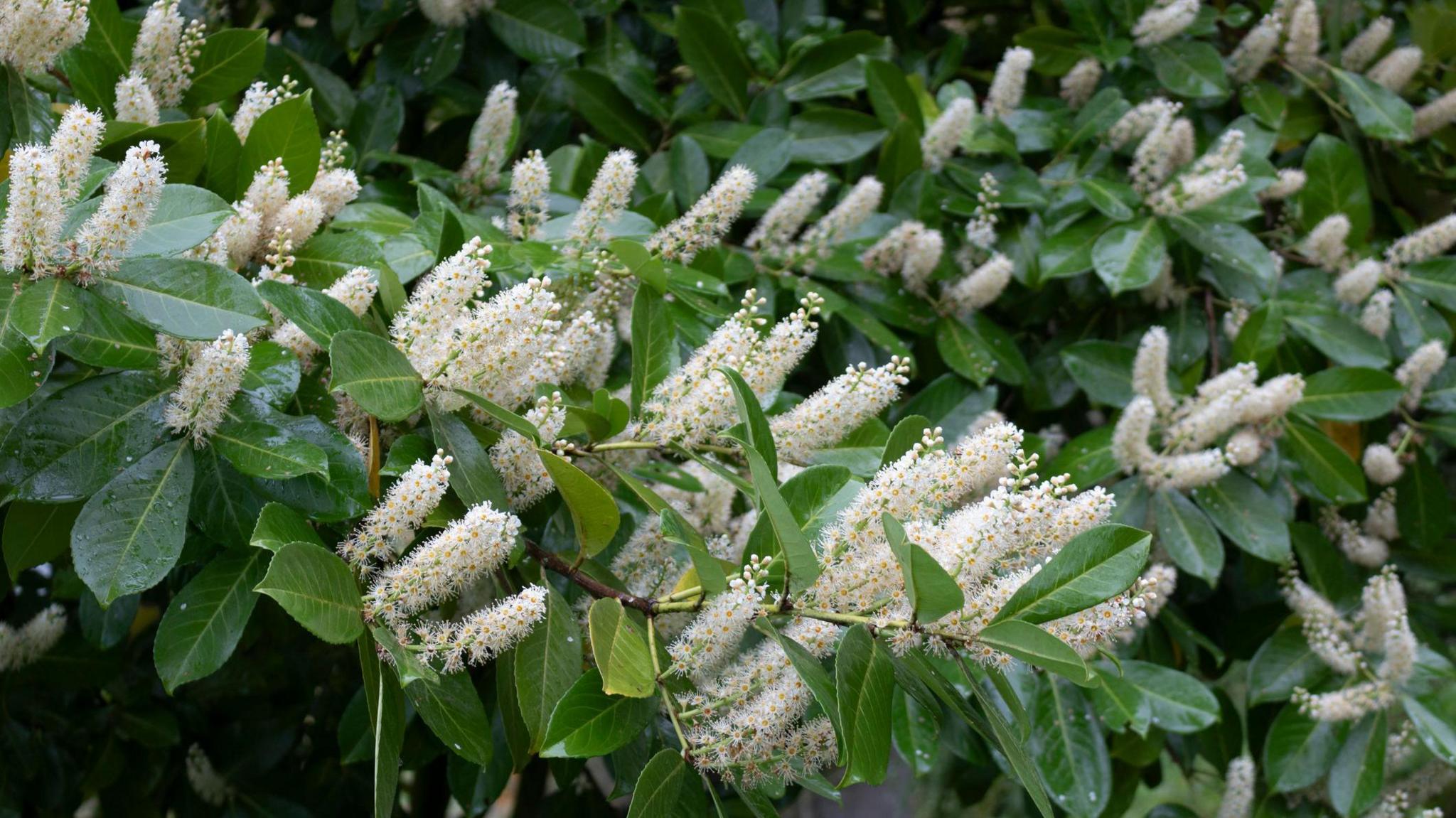
Cherry laurel, a species originally from south-west Asia, is a dense, invasive evergreen shrub with leaves that are poisonous with cyanide
Clearing all the invasive species from the site at the folk museum began in 2022.
The clearance resulted in 1,290 tonnes of green waste, which was then converted to renewable energy through biomass to help fund the planting of more than 2,500 trees at the site over the next few years.
The first phase of this is already underway, with 550 trees planted in an area larger than four football pitches.
A single oak tree can support thousands of species, and is effectively an ecosystem in and of itself, "so you can imagine what happens then when you amplify that", said Niamh Carmichael from the Centre for Environmental Data and Recording (CEDaR).
Project success 'could take 120 years'

The first phase of replanting is underway, with 550 trees being planted in an area more than four times the size of a football pitch
Ms Carmichael described the woodland at the folk museum as a "really important ecological corridor", adding that invasive species are a "significant cause of biodiversity loss globally".
Ms Carmichael said many invasive species were brought here during the Victorian era, when there was a "particular fascination" with the natural world but much less understanding of it.
"New species were accidently or deliberately introduced to habitats with conditions not really built for them.
"The majority of them tend not to do terribly well, but there are, unfortunately, some that are nearly a wee bit too good at surviving."
She said it could take about 120 years for the woodland to fully mature and for the ecosystem to rebalance.
However, making sure that happens is a huge, long-term job.
"With the invasives, you have to keep at it, because you could clear all of the invasive species off the site, but they could then come back in accidentally on a tyre track, or some of the wildlife could accidentally bring it in.
"It's our responsibility to make sure those invasives never take hold again."
Green shoots for Northern Ireland's trees
While this project offers a glimmer of hope through the trees, there is still a long way to go to hit climate targets for tree planting.
Under the Forests for our Future scheme launched in 2020, the Department of Agriculture, Environment and Rural Affairs (DAERA) committed to planting 18 million trees over 10 years, external, meaning 10 trees would be planted for every person living in Northern Ireland.
Yet, five years later, the department's afforestation programme has planted about 4.5 million trees or 2,300 hectares.
In a statement, the department said it recognised that "the annual tree planting rates needed to increase incrementally over the decade from the 200 hectares per year, when the programme launched, to achieve the 9,000 hectare target".
Similarly, a recent Belfast City Council meeting revealed a lack of progress on the One Million Trees project – which started strong, but is now 220,000 trees behind schedule.
Nevertheless, Ms Carmichael said that "in the face of the biodiversity and climate crisis", the early signs of recovery at this project is "a reminder that nature can bounce back, when given the chance".
"It's a hopeful sign of what's still possible."
- Published15 March
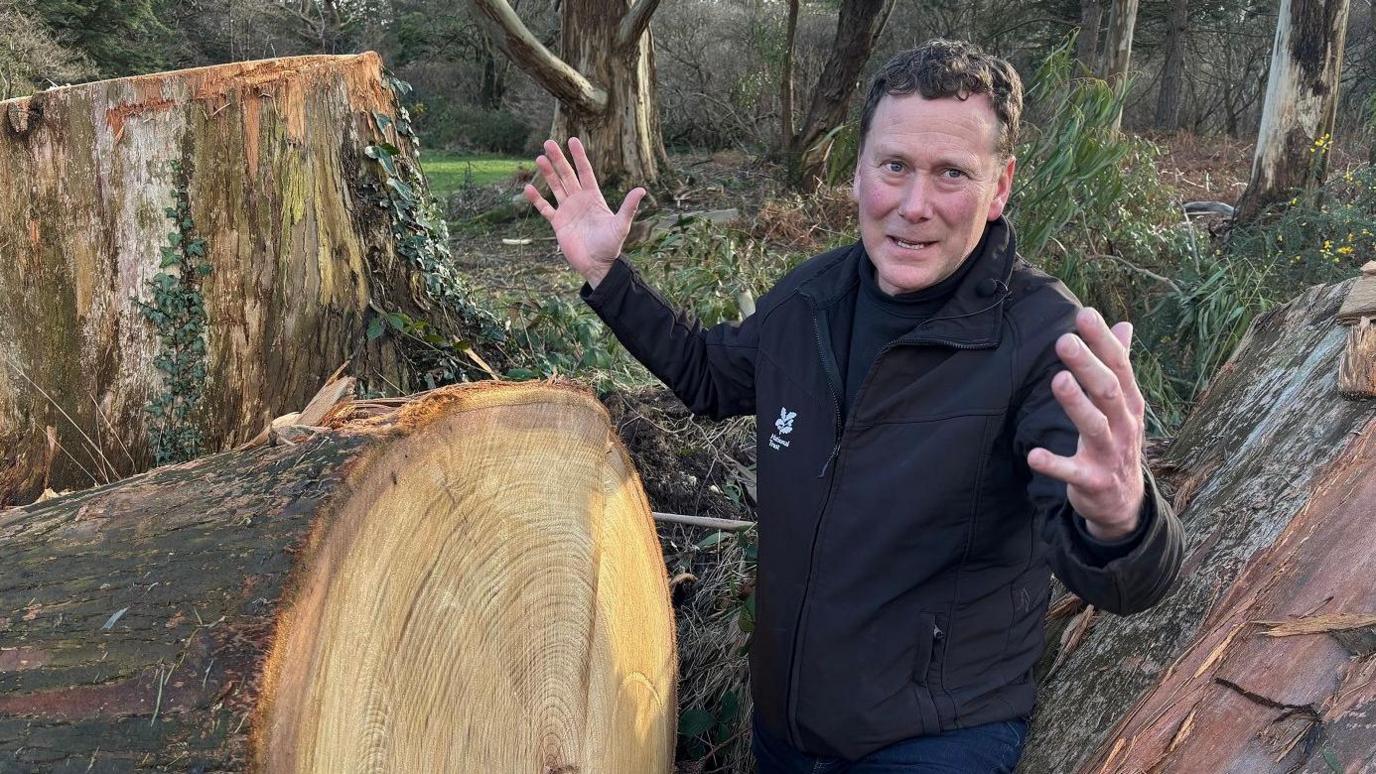
- Published14 March 2020

- Published14 April 2021
